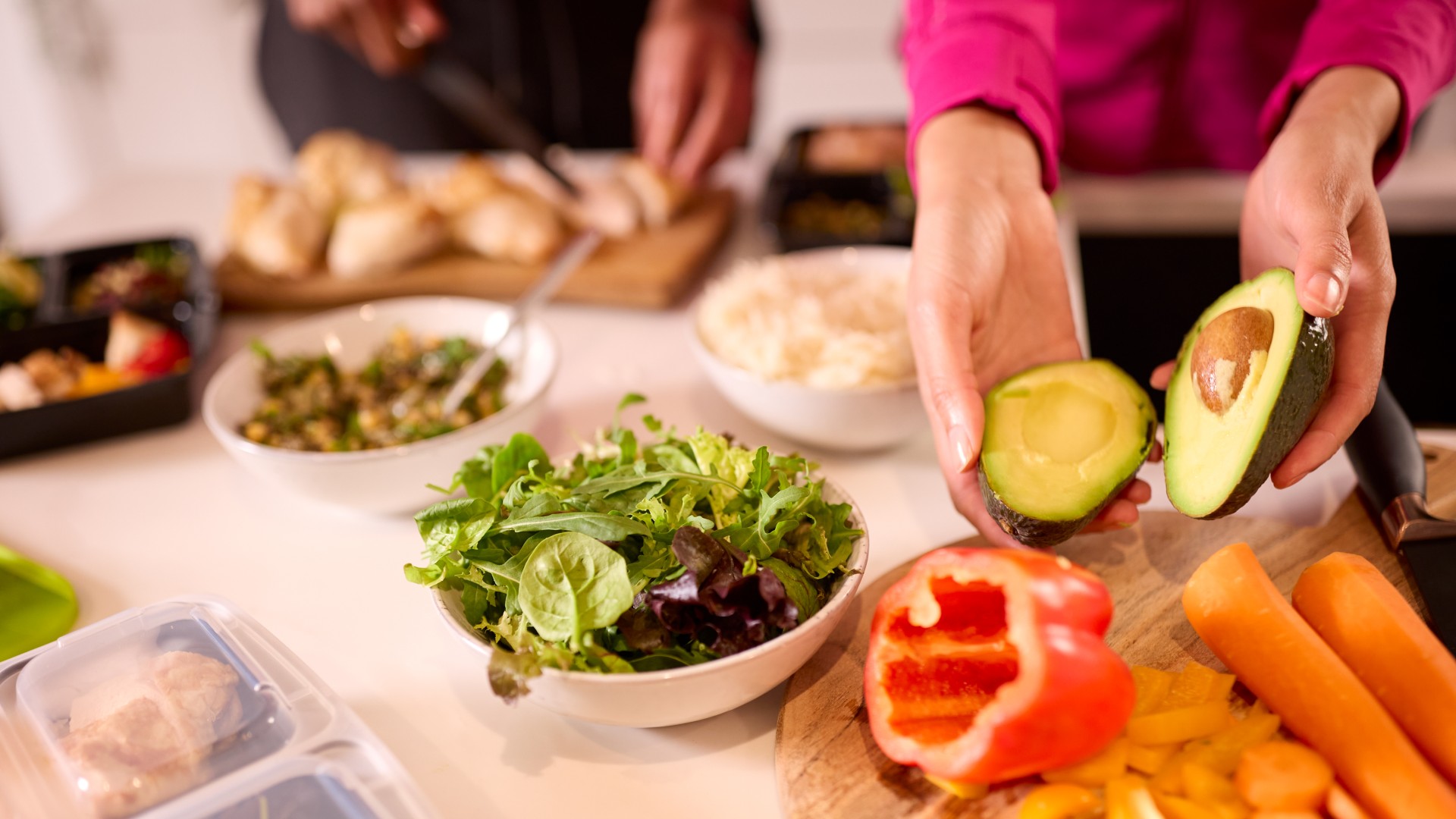More Than Chopping: Why How You Prep Your Food Impacts Nutrition
By Dr. David Samadi
It’s not just what you eat—it’s how you handle it before it hits the plate.
You’ve probably heard that what you eat plays a significant role in your health. But have you ever thought about how you prepare your food, before it even gets to the stove?
Whether you’re slicing, blending, grinding, or peeling, your preparation work can significantly impact how your body digests food and what nutrients it absorbs. Here’s a closer look at how different food prep methods affect nutrition—and why they matter.
Blending vs. Juicing: Not the Same Thing
At first glance, blending and juicing might seem interchangeable. However, nutritionally, they are quite different.
- Juicing extracts only the liquid, leaving fiber behind. That means you miss out on a key nutrient that slows digestion and helps keep blood sugar steady. For example, one whole orange contains approximately 16 grams of carbohydrates, of which 3 grams are fiber. Juice removes that fiber, which can cause blood sugar to spike.
- Blending, on the other hand, keeps the whole fruit or vegetable—fiber and all—intact. That means your smoothie may help you feel fuller for longer and have a more favorable effect on your blood sugar levels, similar to eating the fruit itself.
Research has shown that blended grapefruit retained more phytonutrients (plant compounds linked to health benefits) than grapefruit juice.
Chopping: More Than Just Prep Work
Chopping doesn’t just make veggies easier to eat—it also helps your body unlock nutrients.
Brightly colored produce, such as carrots, sweet potatoes, and mangoes, is loaded with antioxidants. Chopping them breaks down rigid cell walls, making these compounds easier to absorb.
The same goes for leafy greens, apple skins, peppers, and even onions or garlic. In garlic and onions, slicing triggers the release of sulfur compounds, which support heart health.
One caveat: Once chopped, fruits and vegetables begin to lose nutrients due to air exposure. To preserve the benefits, use them right away or store them in airtight containers. Additionally, consider using lemon juice or vinegar to prevent browning, or blanching and freezing for longer storage.
Grinding Seeds: Unlocking the Good Stuff
Seeds like flax and chia are nutritional powerhouses, but only if your body can access what’s inside.
- Flaxseeds are rich in plant-based omega-3s, which support heart and brain health. But whole flaxseeds often pass through your system intact. Grinding them first helps your body absorb those fatty acids.
- Chia seeds are slightly easier to digest, but grinding—or even soaking—can help release more nutrients for optimal absorption.
Peeling: Nutrients in the Skin
While peeling fruit or vegetables can improve texture or taste, it can also strip away key nutrients.
Take apples: the peel holds much of the fiber and antioxidants. Toss it, and you’re missing out. The same is true for cucumbers, where most of the vitamin K lives in the skin.
Interestingly, cooking changes the equation. For example, tomatoes are packed with lycopene, a powerful antioxidant found in the skin. Cooking tomatoes makes lycopene more easily absorbed by your body.
Flavor, Speed, and Cooking Time
Food preparation affects more than just nutrition—it influences flavor and the time you spend in the kitchen.
Cutting foods into smaller pieces reduces cooking time, perfect for busy nights. And chopping ingredients like onions or broccoli releases flavor-changing compounds that can enhance the dish.
The way food is cut can even affect how it absorbs flavors from marinades, spices, and sauces.
Don’t Forget the Cooking Method
While food prep is essential, how you cook your food plays an even bigger role in determining its health value.
- Frying adds calories and often unhealthy fats.
- Store-bought sauces and marinades often contain high levels of sodium and sugar.
- Smoking meats can introduce harmful compounds.
On the flip side, healthier cooking methods include:
- Steaming
- Roasting or broiling
- Stir-frying with a small amount of healthy oil
- Air frying without added fat
Even the healthiest ingredients can become nutritional landmines if they’re deep-fried or drenched in heavy sauces. By ‘nutritional landmines’, we mean that these seemingly healthy ingredients can turn into unhealthy choices when prepared in certain ways.
Bottom Line
Food prep isn’t just about making dinner faster or prettier—it’s an essential part of nutrition. From how you chop vegetables to whether you grind seeds, these small choices can impact how well your body uses the food you eat.
So next time you’re in the kitchen, don’t just think about what you’re making. Think about how you’re preparing it.
Dr. David Samadi is the Director of Men’s Health and Urologic Oncology at St. Francis Hospital in Long Island. He’s a renowned and highly successful board certified Urologic Oncologist Expert and Robotic Surgeon in New York City, regarded as one of the leading prostate surgeons in the U.S., with a vast expertise in prostate cancer treatment and Robotic-Assisted Laparoscopic Prostatectomy. Dr. Samadi is a medical contributor to NewsMax TV and is also the author of two books, Prostate Cancer, Now What? A Practical Guide to Diagnosis, Treatment, and Recovery and The Ultimate MANual, Dr. Samadi’s Guide to Men’s Health and Wellness, available online both on Amazon and Barnes & Noble. Visit Dr. Samadi’s websites at robotic oncology and prostate cancer 911.

